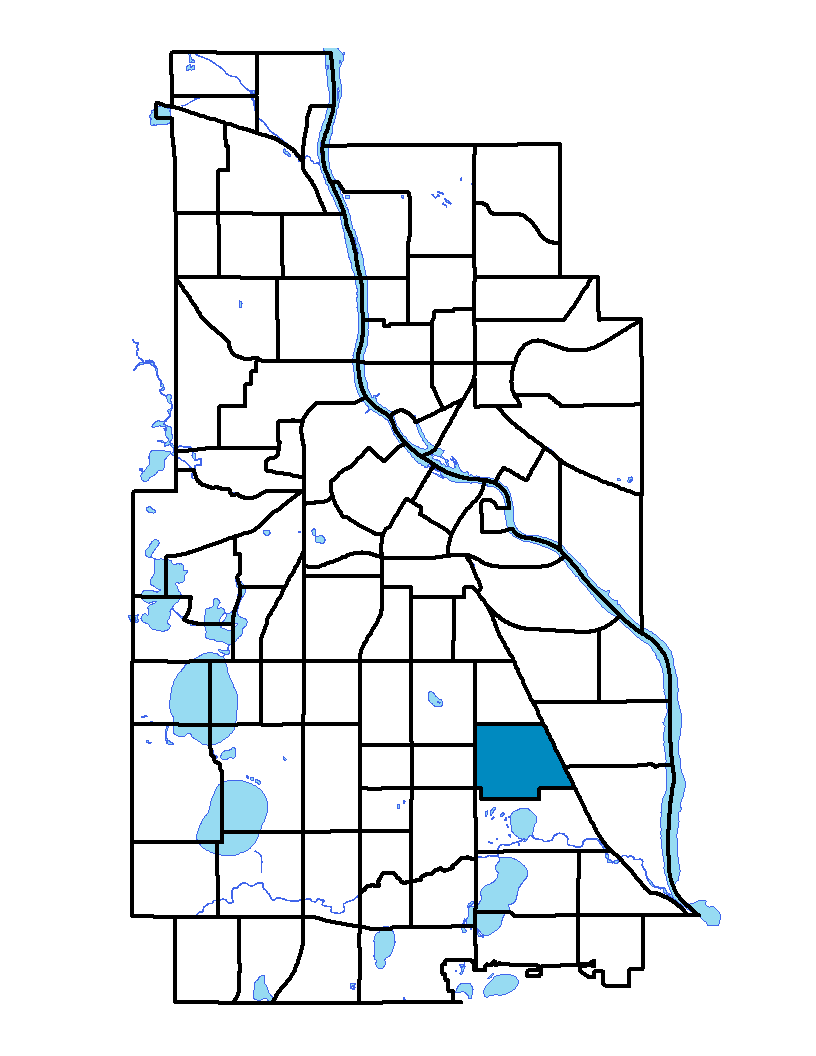The Standish neighborhood on Minneapolis' south side is bound on the north by 36th Street, on the east by Hiawatha Avenue, on the south by 42nd and 43rd streets and on the west by Cedar Avenue. This neighborhood was named after an area elementary school, which had been called Miles Standish after a work by the poet Henry Wadsworth Longfellow. The area was considered the outskirts of the city until immigrants, mostly Swedish and Norwegian, began building their homes here early in the 1900s. Now it is a mainly residential neighborhood. The new light-rail train line along the Hiawatha Avenue corridor connects the neighborhood with downtown, the Minneapolis-St. Paul International Airport and Mall of America. New homes are being built along this corridor.
Standish and Ericsson neighborhoods share a neighborhood association; to learn more visit: www.standish-ericsson.org
Indicator Details
| Indicators |
Primary Domain |
Indicator Value | Rank | Tier |
|---|---|---|---|---|
| Transit Accessibility | Transportation | 268.6 | 55 | Middle |
| Commute Mode Share | Transportation | 27.5% | 48 | Middle |
| Household Transportation Costs | Transportation | 18.4% | 63 | Bottom |
| Pedestrian Connectivity | Transportation | 100.2 | 69 | Bottom |
| Residential Mobility | Social Cohesion | 85.0% | 21 | Top |
| Voter Participation | Social Cohesion | 33.0% | 29 | Top |
| Walkability | Neighborhood Characteristics | 63 | 41 | Middle |
| Offsite Alcohol Outlets | Neighborhood Characteristics | 1 | 6 | Top |
| Food Desert | Neighborhood Characteristics | 50.0% | 11 | Top |
| Tree Cover | Natural Areas | 24.2% | 80 | Bottom |
| Access to Parks and Open Space | Natural Areas | 1.5% | 71 | Bottom |
| Violent Crime | Health Systems and Public Safety | 47.8 | 46 | Middle |
| Chronic School Absence | Health Systems and Public Safety | 49.6% | 27 | Top |
| Low Birth Weight | Health Systems and Public Safety | 5.5% | 27 | Top |
| Motor Vehicle Collisions | Health Systems and Public Safety | 1.4 | 10 | Top |
| Preventable Hospitalizations | Health Systems and Public Safety | 1.7 | 23 | Top |
| Vacancy Rates | Housing | 5.9% | 31 | Middle |
| Age of Housing | Housing | 92.5% | 60 | Bottom |
| Blood Lead Levels in Children | Housing | 5.5% | 55 | Middle |
| Excessive Housing Cost Burden | Housing | 23.9% | 25 | Top |
| Public Assisted Households | Employment Opportunities | 21.7% | 47 | Middle |
| Employment Rate | Employment Opportunities | 72.1% | 24 | Top |
| Long-Term Unemployment | Employment Opportunities | 4.7% | 32 | Middle |
| Travel Time to Work | Employment Opportunities | 21.5 minutes | 29 | Top |
| Residential Proximity to Traffic | Environmental Hazards | 0.0% | 1 | Top |
| Proximity to Brownfield Sites | Environmental Hazards | 6.5% | 49 | Middle |
| School Proximity to Traffic | Environmental Hazards | 0.0% | 1 | Top |
| Proximity to Superfund Sites | Environmental Hazards | 40.7% | 57 | Middle |
| Toxic Releases from Facilities | Environmental Hazards | 0.0% | 1 | Top |
| Reading Proficiency | Educational Opportunities | 19.8% | 22 | Top |
| Adult Educational Attainment | Educational Opportunities | 92.1% | 39 | Middle |
| High School Graduation Rate | Educational Opportunities | 10.0% | 7 | Top |
| School Readiness Scores | Educational Opportunities | -% | - | Data N/A |
| Preschool Enrollment | Educational Opportunities | 21.5% | 79 | Bottom |
| Business Retention | Economic Health | 3.5% | 27 | Top |
| Access to Mainstream Financial Services | Economic Health | 23.5% | 42 | Middle |
| Local Business Vitality | Economic Health | 55.2% | 46 | Middle |

